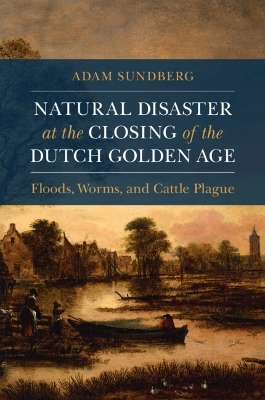
Natural Disaster at the Closing of the Dutch Golden Age
Seiten
2024
Cambridge University Press (Verlag)
978-1-108-92659-1 (ISBN)
Cambridge University Press (Verlag)
978-1-108-92659-1 (ISBN)
Natural disasters repeatedly beset the Dutch Republic during the eighteenth century and coincided with environmental, political, economic, and social changes many characterized as decline. This book explores the connections between disasters and Dutch decline and uncovers lessons these eighteenth-century experiences offer for the present.
By the early eighteenth century, the economic primacy, cultural efflorescence, and geopolitical power of the Dutch Republic appeared to be waning. The end of this Golden Age was also an era of natural disasters. Between the late seventeenth and the mid-eighteenth century, Dutch communities weathered numerous calamities, including river and coastal floods, cattle plagues, and an outbreak of strange mollusks that threatened the literal foundations of the Republic. Adam Sundberg demonstrates that these disasters emerged out of longstanding changes in environment and society. They were also fundamental to the Dutch experience and understanding of eighteenth-century decline. Disasters provoked widespread suffering, but they also opened opportunities to retool management strategies, expand the scale of response, and to reconsider the ultimate meaning of catastrophe. This book reveals a dynamic and often resilient picture of a society coping with calamity at odds with historical assessments of eighteenth-century stagnation.
By the early eighteenth century, the economic primacy, cultural efflorescence, and geopolitical power of the Dutch Republic appeared to be waning. The end of this Golden Age was also an era of natural disasters. Between the late seventeenth and the mid-eighteenth century, Dutch communities weathered numerous calamities, including river and coastal floods, cattle plagues, and an outbreak of strange mollusks that threatened the literal foundations of the Republic. Adam Sundberg demonstrates that these disasters emerged out of longstanding changes in environment and society. They were also fundamental to the Dutch experience and understanding of eighteenth-century decline. Disasters provoked widespread suffering, but they also opened opportunities to retool management strategies, expand the scale of response, and to reconsider the ultimate meaning of catastrophe. This book reveals a dynamic and often resilient picture of a society coping with calamity at odds with historical assessments of eighteenth-century stagnation.
Adam Sundberg is an associate professor of History at Creighton University. His work has appeared in Environmental History, Dutch Crossing, and The Low Countries Journal of Social and Economic History.
Introduction; 1. Rampjaar reconsidered; 2. 'Disasters in the year of peace': The first cattle plague, 1713–1720; 3. 'The fattened land turned to salted ground': The Christmas flood of 1717 in Groningen; 4. A plague from the sea: The shipworm epidemic, 1730-1735; 5.'Increasingly numerous and higher floods': The river floods of 1740–41; 6. 'From a love of humanity and comfort for the fatherland': The second cattle plague, 1744–1764; 7. The twin faces of calamity: Lessons of decline and disaster.
| Erscheinungsdatum | 10.08.2024 |
|---|---|
| Reihe/Serie | Studies in Environment and History |
| Zusatzinfo | Worked examples or Exercises |
| Verlagsort | Cambridge |
| Sprache | englisch |
| Maße | 152 x 229 mm |
| Gewicht | 580 g |
| Themenwelt | Geisteswissenschaften ► Geschichte ► Regional- / Ländergeschichte |
| Naturwissenschaften ► Biologie ► Ökologie / Naturschutz | |
| ISBN-10 | 1-108-92659-2 / 1108926592 |
| ISBN-13 | 978-1-108-92659-1 / 9781108926591 |
| Zustand | Neuware |
| Informationen gemäß Produktsicherheitsverordnung (GPSR) | |
| Haben Sie eine Frage zum Produkt? |
Mehr entdecken
aus dem Bereich
aus dem Bereich


